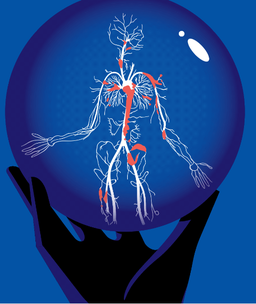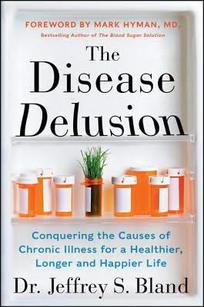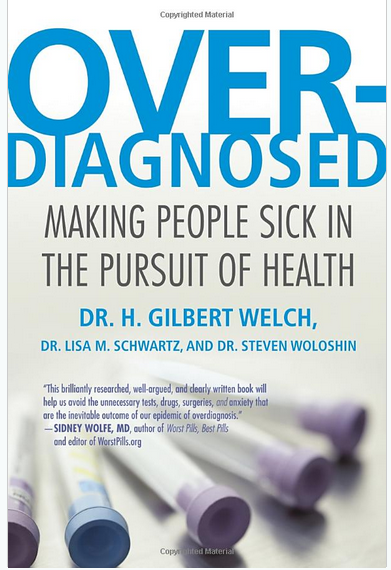Earlier Than Ever Before.
Can we predict whether they’re going to be dangerous?
By Siddhartha Mukherjee (September 11, 2017, The New Yorker)
“It is much more important to know what sort of a patient has a disease than what sort of a disease a patient has.”
William Osler, MD 1849-1919
William Osler, MD, was one of the founders of American Medicine at Johns Hopkins, and his quote seems particularly appropriate after reviewing the September 2017 article in The New Yorker. The subject is about cancer, its diagnosis, treatment and what doctors are really doing for their patients.
Mukherjee mentions Occam’s razor twice in the article. Occam’s principle states that among competing hypotheses, the one with the fewest assumptions should be selected. Simple answers are better than complicated ones. This has been a driving principle of science for the last few centuries, but I think the tide is changing. Over the last fifty years of following the advances in science and medicine, it is amazing to me how many things have swung from the simple to the complex.
The science of evolution of our solar system grows more complex every year. Copernicus made things much simpler by proposing that the sun was at the center of the solar system, not earth. It was all simple clockwork. Jupiter is now thought to have started out further from the sun then it is now — to have actually moved much closer to the sun, scattering small objects (and even planets) out into space, and then moved back to where it now resides. No one theorized this complex movement fifty years ago.
Research involved with the AIDS epidemic showed that the immune system is far more complex and has many more moving and changing parts than anyone had dreamed. In the 1970s there was a simple idea — if we could detect cancer earlier and declare war on it, we could save a lot of lives. Unfortunately, that has not worked out. Screening programs for breast, prostate, thyroid cancer and melanoma have resulted in a huge increase in the number of patients treated with almost no reduction in the death rates from these diseases.
On page two, Dr. Daniel Hayes talks about breast cancer and says, “Only some fraction of the patients who receive toxic chemotherapy will really benefit from it, but we don’t know which fraction. And so, unable to say whether any particular patient will benefit, we have no choice but to overtreat.” I disagree. Dr. Hayes and his patients do have a choice. The number of patients that benefit may be as low as 3%. The other 97% will develop damage from chemotherapy treatments and will either live or die anyway, but will not have received any benefit. Mukerjee does not address money in the article, but the entire medical system is making a huge amount by implementing these testing programs and therapies. Whenever a more careful consideration of screening and therapy programs is suggested, the medical companies scream bloody murder about restricting medical care, and could result in a large amount of dying patients.
Mark Twain was known to have said, “It is difficult for a man to see the truth when his income depends on not seeing the truth.”
In the article, the theory of the spread of cancer is discussed and states, “This theory would form the intellectual basis for William Halsted’s “radical mastectomy.” Halsted and William Osler were colleagues at Johns Hopkins. A study published in 1971 proved that radical mastectomy had the same breast cancer death rates versus simply removing the lump and giving local radiation. There was no added benefit for performing the more radical surgery. Radical mastectomy rates plummeted in the 1970s but are now rising again, with no proof it saves lives. Numerous surgeons have told me that many of their patients insist on getting the mastectomies. That may be true, but surgeons could still refuse to perform a surgery that may cause more harm than benefit. I am sure they could convince a patient that no benefit would be gained by removing their breasts — but that may not be in the best interest of the surgeon. There are also more lawsuits for patients dying after too little treatment than too much.
On page four, Mukherjee talks about a meeting he had with Gilbert Welch, MD. I have read Welch’s book, Overdiagnosis, and I highly recommend it. Welch talks about a thyroid cancer screening program in South Korea that resulted in a huge increase in thyroid cancer diagnosis and treatment but no reduction in cancer deaths. The basic reason is that, as with breast and prostate cancer, a lot of people have slow moving tumors that would never kill them. The screening uncovers many more tumors that would otherwise remain hidden. On the other hand, when the screening program finds aggressive tumors, it is often already too late. They may have already sent metastasis all over the body. Even when the thyroid, breast or prostate is removed, it may already be too late to prevent the cancer spreading. The distant disease may still be hidden, but it is already there.
Again, quoting Dr. Daniel Hayes, he says, “The early detection of breast cancer via mammograms saves women’s lives although the benefit is modest.” He doesn’t say how modest. In fact, the total death rate for breast cancer continues to rise. In 1975, 70,000 women were diagnosed and treated for breast cancer – average deaths were about 35,000. In recent years, around 285,000 women are treated yearly for new breast cancer diagnosis and the deaths are around 39,000 a year. It may have seemed like a good idea to set up these screening programs to make more cancer diagnoses. As it turns out, this has resulted in a huge increase in patients being treated for breast, prostate, and thyroid cancers as well as melanoma type skin cancer. The death rates, despite so many more patients undergoing major treatments, has remained about the same. Mukherjee says, “ For Welch, the fact that diagnoses of thyroid cancer or prostate cancer could soar without a corresponding effect on mortality rates was a warning, a little knowledge had turned out to be a dangerous thing.”
The solution is much more likely to be in a holistic approach that involves the patient and their resistance to the spread of cancer, rather than just focusing on the cancer itself. Cancer researcher D.W. Smithers is quoted, “Cancer is no more a disease of cells than a traffic jam is a disease of cars.” This is where Occam’s razor comes in again. Oncologists, like everyone else, want simple solutions. They don’t want to multiply the factors that they have to consider.
More is not necessarily better. On page eight, Mukherjee says, “We err toward risk aversion, even at the cost of bodily damage; we don’t learn what would happen if we did nothing.” He was counseling one of his patients that had undergone a hysterectomy — when her newly removed uterus was examined, doctors found a rare, malignant sarcoma lodged in the tissue — a tumor so small that it could not be detected on any of her preoperative scans. Both her gynecologist and surgeon had recommended an aggressive procedure to remove the ovaries and surrounding tissue. Mukerjee explained that her circumstances were completely different, as the tumor was detected incidentally, with no signs or symptoms of the cancer (and was contained in the uterus, which no longer inhabited her body). She looked at me as if I were mad and asked, “Would you sit and do nothing if someone found this tumor in you?” She decided to go ahead with the surgery.” I have been in this position myself. It is very difficult to say no to a therapy that is proposed. There is an ad for Houston’s MD Anderson Cancer Hospital that says, “They will never give up on your cancer.” Maybe many of their patients would be better off with less therapy, rather than more.
In conclusion, Mukherjee states, “It would return us to the true meaning of Holistic: to take the body, the organism, its anatomy, its physiology -- this infuriatingly intricate web -- as a whole. Such an approach would help us understand the phenomenon in all its vexing diversity; it would help us understand when you have cancer and when cancer has you. It would encourage doctors to ask not just what you have but what you are.” I started medical school in 1967— everyone in my class would know that Dr. Mukherjee was simply paraphrasing William Osler. Treating this particular individual patient was important in the late 1800s but seems to have been forgotten in 2017. Mukherjee doesn't seem to know that he is just resurrecting an old idea from Osler.
“It is much more important to know what sort of a patient has a disease than what sort of a disease a patient has.”
William Osler, MD 1849-1919






 RSS Feed
RSS Feed